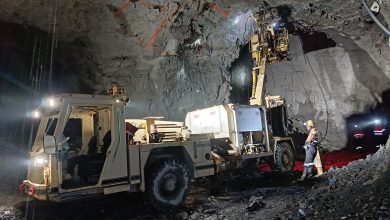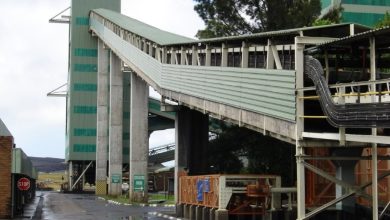
Disruption in the global supply chain of equipment and critical spare parts has caught mining companies unawares, heightening the risk of halting operations, at the extreme. This is a situation which could result in huge revenue too. Thankfully, second-hand yellow metal procurement has turned out to be a lifeline for mining companies.
Contrary to initial expectations, there have been delays in the delivery of new equipment and spare parts orders from overseas-based OEMs to mining companies in Africa. Reports indicate that this has not spared industries in other regions.
To a large extent, this is due to the COVID-19 pandemic and the War in Ukraine. As a result of these two events, mining companies have had to contend with a double whammy. The former has resulted in delays in the delivery of equipment orders due to disruptions in factories during hard lockdowns. On the other hand, the latter has brought about high oil prices, causing the escalation of shipping costs and the attendant equipment price inflation.
Conrad Smith, the Managing Director of MHS Equipment & Rental, has been observing these trends with a vested interest, specifically their effect on seller and buyer attitudes (mindset). He spells out that – sufficiently equipped – the company is relishing opportunities that have opened up in the equipment supply and demand gap, both direct sales and rental options.
Mindset shift
The mindset shift is evident in two areas: the shift to convenient alternatives and the growing preference for retaining old equipment for disposal.
The astronomic hike in the purchase price of new equipment from main brands like Caterpillar has compelled mining companies and contractors to rethink their procurement strategies. Second-hand yellow metal equipment is turning out to be a cost-effective convenient alternative as mining companies are aiming at forestalling downtime and sustaining the productivity momentum. Thus far, Smith indicates that there has been an increase in enquiries on lower-hour equipment from both mining houses and contractors alike.
Usually, mining companies like disposing of and upgrading equipment, but now they are holding on dearly to their inventory, Smith states. “Interestingly enough, the larger mining houses are also looking to hang on to their older equipment and even buy older used equipment which would normally be made redundant. They then rebuild the same front to back at a fraction of new replacement value.”
Sufficiently equipped
Tapping into its extensive experience, MHS deems the challenge as an opportunity to rise to the occasion and fill the supply and demand gap for many contractors and mining houses located all over the world. With an extensive international supplier and end-user client base, which has been built over the past 25 years, the company is sufficiently equipped to meet clientele’s needs timely. “Often the long lead times are just not an option, and this is where we come in. In some cases, we can supply new from other territories, but in most, we supply close to new as possible. Our experienced team handle the entire process from start to finish- procurement, shipping, marine insurance, clearing and forwarding to delivery and commissioning on site,” assures Smith.
Uptake in the rental business
The equipment demand and supply crunch has also occasioned a marked uptick in uptake in demand for equipment rental services. Actually, equipment rental has MHS’ strong growth avenue even during the pre-pandemic era, when the global equipment supply was ‘normal’, Smith elaborates. “Over the past few years, there have been several larger contractors that have unfortunately closed. Currently, only five maybe six larger mining contractors are operating in South Africa, which has opened the door for smaller players.“
Through flexible rental options, MHS is committed to empowering selected smaller Black Economic Empowerment (BEE) groups and communities that work for the large mining Houses. The company assists these small teams with equipment, training and expertise that guarantee great ‘up-times’ for the sites. “There are various models which we offer from normal dry rate rental (no operators) through to a Rent to Own model (with MHS support) This model is especially attractive and supported by the blue-chip mining houses, assisting them to empower local communities without any disruptions to their operations.”
Reducing exposure to risks
Africa has emerged as the new growth frontier for yellow equipment suppliers. But security and safety risks due to political instability, civil war, as well as poor governance, persist. Fortunately, being a local business with years of experience, MHS has forged partnerships that reduce the exposure of its clients to these risks as much as possible.
Bullish about business prospects
Overall, Conrad is enthused at the confidence clientele have in MHS Equipment & Rental and is bullish about prospects for participating in more transactions. “We have seen many of the Australian and European companies operating in Africa prefer to make use of a local player with experience on the ground such as MHS. I am proud to say we have emerged as a go-to company when it comes to yellow metal equipment procurement.”
Sidebar
Engaging expertise in asset disposal
In this atmosphere, mining companies have become obsessed with cutting costs. To some degree, this could be reasonable, as they are aiming to stay afloat by offsetting rising operating costs. They are continuously searching for different ways that can help them meet this objective. And one option that is being adopted is the in-sourcing of services, instead of outsourcing to an organisation well-versed in the field.
Unfortunately, based on what MHS Equipment has gathered, more often than not, this approach backfires as organisations get less value from their equipment. Generally, when mining companies decide to carry out the disposal of assets in-house, there are two areas mining companies overlook. In most cases, they don’t have an extensive database of buyers on the equipment and, even in situations they do, they may not have the capacity to deal with the buyers effectively.
Short of capacity, mining companies then elect to take the easy way out of unreserved auctions. Sadly, they only realise belatedly that it is very expensive. “Through unreserved auctions, sales attract an 8 to10% fee for the sale, plus a 10% buyer’s commission, that’s close to 20% before factoring in any marketing costs. The buyers take this 20%, plus the cost to relocate the equipment into consideration when bidding,” Smith laments.
Fortunately, most companies are becoming aware of the downsides of in-house asset disposal and are engaging the expertise of MHS. “Mining companies have realised that the equipment is specialised. As we know models which sell well into a territory or the region, we do assure the sellers of the best possible returns at all times,” Smith explains.






